Gold , Oil & The Dollar
By Colin Twiggs
October 31, 2006 2:30 p.m. AET (10:30 p.m. ET)
October 31, 2006 2:30 p.m. AET (10:30 p.m. ET)
These extracts from my daily trading diary are for educational
purposes and should not be interpreted as investment advice.
Full terms and conditions can be found at
Terms of Use. The next newsletter (an update on Stocks
& Indexes) will be on Saturday.
Gold
Spot gold formed a higher low at [E] before breaking through
resistance at $600/$607. Retracement that respects support at
$600 would confirm the change to an intermediate up-swing.
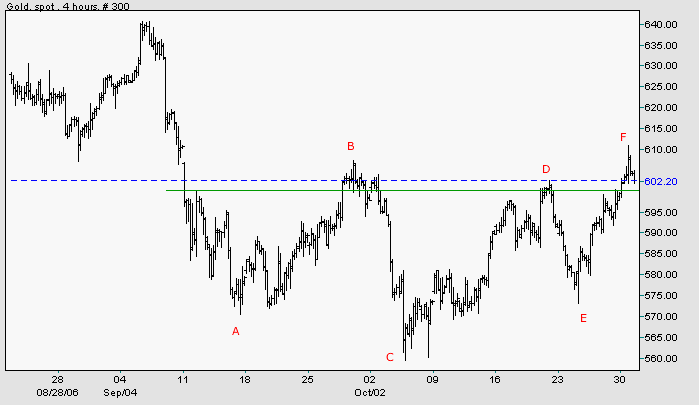
Source: Netdania
Medium Term: The recent rally also penetrated the upper
border of a large symmetrical triangle, another bullish sign.
However, crude oil prices are weakening
and may drag gold back, so we need to wait for confirmation of
the breakout. The target for an upside breakout is calculated
as $790 : (600 + {730 - 540}).
Long Term: Gold remains in a primary up-trend with support at $540.
Long Term: Gold remains in a primary up-trend with support at $540.
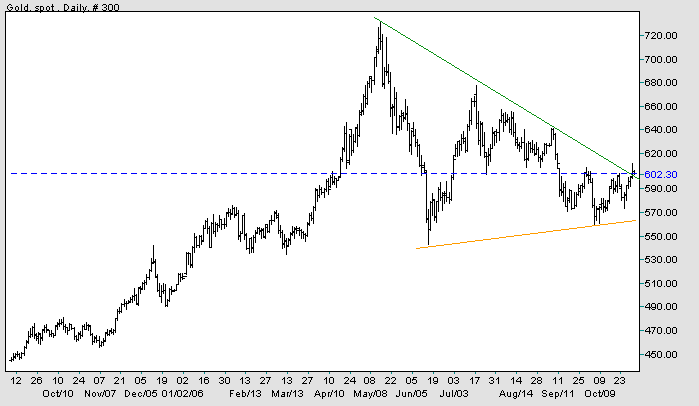
Source: Netdania
Crude Oil
December Light Crude again respected resistance at $62 before
reversing to close at $58.36: a bearish sign. A fall below last
week's low would signal another intermediate down-swing,
confirmed if the retracement respects resistance at $58.
Medium Term: Expect further support at $55.
Medium Term: Expect further support at $55.
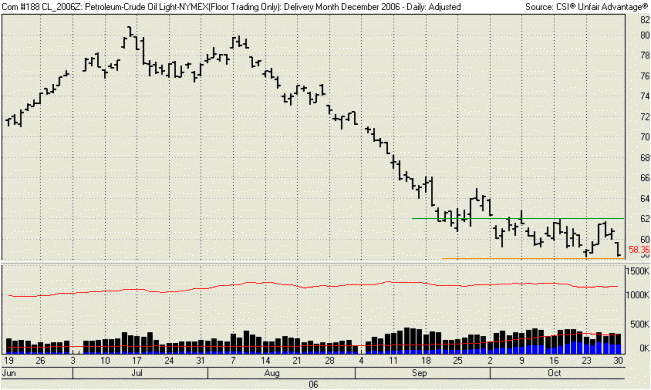
Long Term: Retracement from $80 to $55 may merely
establish the base for continuation of the larger up-trend, but
this could take some time to emerge.
Currencies
The euro respected support at $1.250, followed by a
higher low and a new high above $1.265. The currency now
appears headed for a test of the upper border of the 6 month
consolidation.
Medium Term: A peak below the high of [E] would make a bearish descending triangle, with support at $1.250/$1.245.
Long Term: A rise above $1.30 would test the previous high at $1.37, while a fall below $1.245 would test primary support at $1.165, threatening to complete a large head and shoulders reversal.
Medium Term: A peak below the high of [E] would make a bearish descending triangle, with support at $1.250/$1.245.
Long Term: A rise above $1.30 would test the previous high at $1.37, while a fall below $1.245 would test primary support at $1.165, threatening to complete a large head and shoulders reversal.
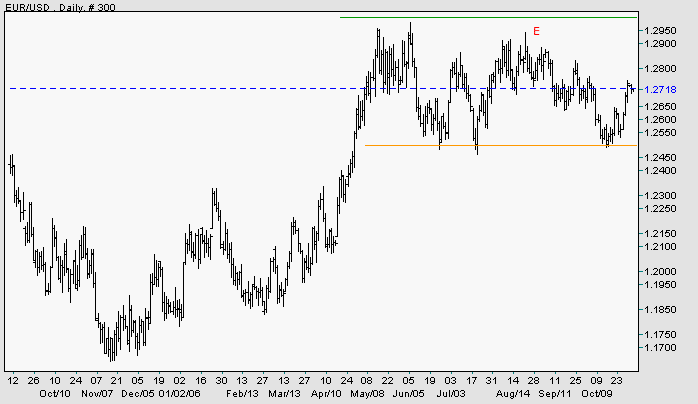
Source: Netdania
Treasury yields
The 10-year yield respected its 100-day moving
average and is headed for another test of support at 4.60%
-- a bearish sign that would be confiirmed if there is a break
below the recent lows.
Medium Term: Respect of support at 4.60% would confirm that we are still in a primary up-trend. Failure of support, however, and a break of the long-term trendline is now a distinct possibility.
The yield differential (10-year T-notes minus 13-week T-bills) is declining further below zero, increasing risk of an economic slow-down.
Medium Term: Respect of support at 4.60% would confirm that we are still in a primary up-trend. Failure of support, however, and a break of the long-term trendline is now a distinct possibility.
The yield differential (10-year T-notes minus 13-week T-bills) is declining further below zero, increasing risk of an economic slow-down.
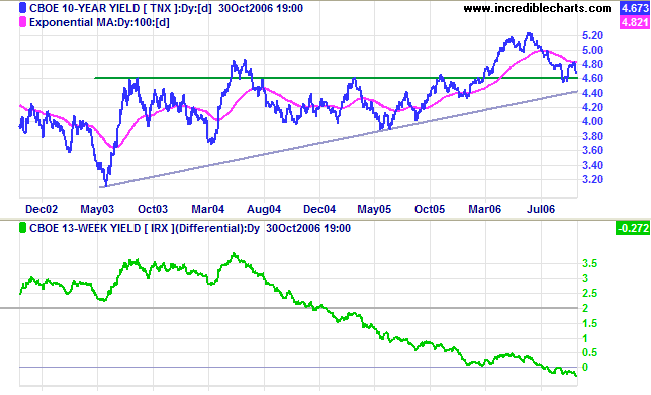
Long Term: Probability of recession in the next
four quarters rose to 40 per cent according to the
Wright
Model. A rise above 50 per cent would be cause for
concern.
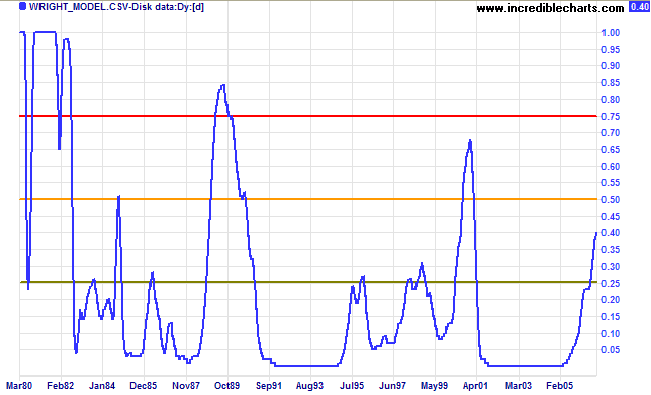
The past is to learn from and not to live
in.
~ Richard L. Evans
~ Richard L. Evans
Technical Analysis and PredictionsI believe that Technical Analysis should not be used to make predictions because we never know the outcome of a particular pattern or series of events with 100 per cent certainty. The best that we can hope to achieve is a probability of around 80 per cent for any particular outcome: something unexpected will occur at least one in five times.My approach is to assign probabilities to each possible outcome. Assigning actual percentages would imply a degree of precision which, most of the time, is unachievable. Terms used are more general: "this is a strong signal"; "this is likely"; "expect this to follow"; "this is less likely to occur"; "this is unlikely"; and so on. Bear in mind that there are times, especially when the market is in equilibrium, when we may face several scenarios with fairly even probabilities. Analysis is also separated into three time frames: short, medium and long-term. While one time frame may be clear, another could be uncertain. Obviously, we have the greatest chance of success when all three time frames are clear. The market is a dynamic system. I often compare trading to a military operation, not because of its' oppositional nature, but because of the complexity, the continual uncertainty created by conflicting intelligence and the element of chance that can disrupt even the best made plans. Prepare thoroughly, but allow for the unexpected. The formula is simple: trade when probabilities are in your favor; apply proper risk (money) management; and you will succeed. For further background, please read About The Trading Diary. |
